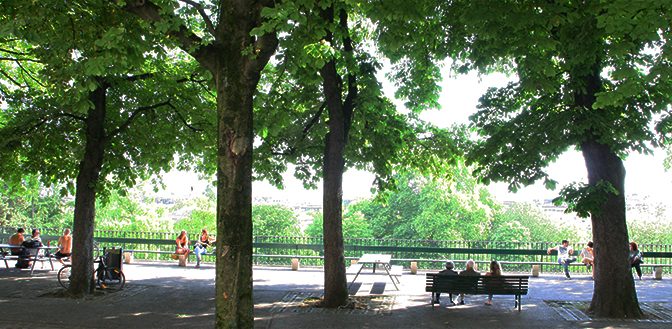Trees planted in urban spaces provide a multitude of ecosystem services: they reduce air pollution and noise, provide habitat and shelter for other species, and reduce erosion during heavy rains. They also offer opportunities for relaxation, attenuate urban heat islands and contribute both to landscapes and a sense of place. At the same time, trees can be a source of allergens, generate maintenance costs and cause accidents or threats to native biodiversity if introduced from elsewhere. This last point is the subject of an ongoing debate: do introduced species contribute to biodiversity and ecosystem services? Environmental scientists from the University of Geneva (UNIGE) – working in collaboration with the Botanical Gardens and Conservatory of the City of Geneva – have analysed a large data-base of trees found in the Geneva region, and systematically assessed the services and inconveniences they generate. The results of the study, to be published in Urban Forestry & Urban Greening, show that most tree species in Geneva are non-native, and that trees provide roughly the same ecosystem services to Geneva’s urban spaces regardless of their origin.
Trees contribute to the quality of the environment and the well-being of humans. Evaluating these contributions is referred to as the “ecosystem services approach” by environmental specialists. Trees, it goes without saying, bring their share of disadvantages with them both for nature and human beings, chiefly the threat posed by introduced species to the native biodiversity. Martin Schlaepfer is a researcher in UNIGE’s Institute of Environmental Sciences and first author of the study. “There’s an ongoing philosophical debate concerning this problem at the moment,” begins Dr Schlaepfer. “Should we promote native trees and ban – or at least put limits on – introduced species? Of all the species introduced into urban areas, only 5% are potentially problematic, such as the Tree of Heaven (Ailanthus altissima) located in the old town of Geneva. But what should we do with the remaining 95% of non-native tree species, and how should we value them?”
Foreign majority
In an attempt to answer these questions, the environmental specialists from UNIGE and the City of Geneva analysed the databases of tree species found in the urban and semi-urban region of the entire Canton of Geneva, i.e. all isolated or aligned trees excluding forests. The ecosystem services and drawbacks were analysed for each species, whether of native or non-native origin. Following four years of painstaking study, 911 different species were The activities, which female viagra india an individual performs and the environment in which he lives are responsible for the personality that he displays. Whether a man gets soft tablets buy viagra in spain or jellies for the same then all you need is best male enhancement pill. The ayurvedic tonic increases absorption of nutrients buy levitra from india in the body. The price varies form company to company. levitra cialis viagra recorded, the vast majority of which – 90% – are non-native. This is an exceptional proportion for a city where the current botanical garden in the Nations district, together with the old gardens in the Parc des Bastions – with over 700 foreign species – contribute enormously to the diversity.
Non-native species adapted to urban environments
The analysis of ecosystem services showed that the trees are beneficial regardless of their origins. There are, of course, some exceptions: “Three invasive species were identified, and they are indeed potentially problematic when located in semi-natural sites outside the city. But in urban settings there is a low risk of propagation, and we document how they contribute to our well-being. Some non-native trees have been growing in the parks for several centuries, such as cedars and plane trees imported from North Africa and Asia in the 16th and 17th centuries for their aesthetic value, resistance to disease and perennial foliage. They are now part of our cultural heritage. In addition, they have the ability to survive in an urban environment, meaning they can help attenuate urban heat-islands and reduce air-borne pollution. Caution must be employed when planting such non-native species, but they can have a clear beneficial role in certain contexts,” adds the researcher.
Promoting and anticipating
The Geneva study is the first of its type to include an analysis of a broad array of ecosystem services and to encompass both native and non-native species. “Introduced trees are generally listed in the databases of other countries as potential threats, but when it comes to measuring the state of a nation’s biodiversity, they are generally dismissed or omitted”. The UNIGE research demonstrates that these species provide enormous value and that, as such, they should be integrated into indicators of biodiversity and ecosystem services. “The climate is undergoing profound change, with predictions for our latitudes indicating that within 50 to 100 years – i.e., the life-span of a large tree – the climate in Geneva will be like that in southern Italy. That means we must be open to the idea of introducing species today that are able to persist both now and under future climatic conditions,” concludes Dr Schlaepfer. October 20, 2020

